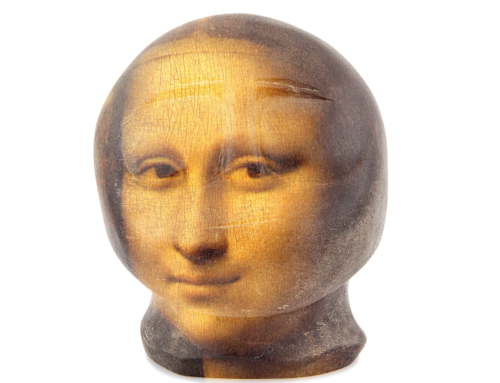Cracks have developed a bad reputation and are considered blemishes. Cracked implies broken, ready to be discarded. “He’s a crackpot! What’s he thinking – that he can part the Red Sea? That he’s Moses?” Such a crackpot needs to be avoided. We commonly believe that the crack damages the object, the bone, the appearance, the value. We tend to think of cracks as a liability, a sign of deterioration. How limited a view, how shallow!
Imagine this: the dinner guests are coming in an hour. What to do? Spruce up the place, read a few pages of that interminable novel, flip on the TV? How many times have you had this dilemma? There’s not enough time to accomplish much, but too much time to sit in a chair counting molecules of air. Lost time? That depends.
Consider the 60 minutes a precious gift. I did that once some time ago. It went like this: it was 5 o’clock and I wondered what to do before the guests arrived at 6. Write perhaps, I thought. I have a crack of time. A few minutes later I started scribbling. I wrote my thoughts, never mind how good or bad they were. I put them in the vacuum begging to be filled, and here they are: this essay on cracks.
Are you obsessed by bulks, those huge things we lump as one, like career, success, failure, what we believe to be the important things in life? And important they are. But look more closely. Those bulks are filled with cracks, interruptions, and occasional happenings. They are riddled with cracks. The bulk is no more than a puzzle, bits pieced together to make a single image. And what is between those pieces? Cracks, of course. Without cracks we would be immobile statues at best, stone carvings that shatter when they fall. Cracks give modularity, flexibility, time enough to write essays, think, and change the world.
As a child, or later, have you not walked along a sidewalk avoiding the cracks? Afraid to fall in? I doubt that. Perhaps it’s an intuitive sense of the importance of cracks: they must be recognized and appreciated. Not stepping on a crack is to value it, give it prominence. You can stomp on that solid block of concrete, but tiptoe on the cracks, don’t damage them; they are the vascular system that brings lifesaving oxygen.
When we plan a crack, we forget that it’s a crack. What about that two-week vacation at the beach next July? Let’s face it: it’s a crack in your life. But try to live without it!
A crack results when two entities are placed next to one another. Adjacent cells are separated by tiny spaces – cracks. But that intercellular space is vital for the tissue, for life. It’s a dynamic site no less valuable than the cells it separates, and required if the cells are to survive. It’s where nutrients accumulate to feed the cells, and where molecules exchange between the cells. It’s those cracks of space that blur the distance between the cells, transforming the group into tissues.
There are maturing cracks that evolve graciously with time, such as cracks of paint on an old master portrait – a Vermeer or Rembrandt. Not planned, not wanted, yet beautiful marks of age and authenticity. Like the deep creases that line an old friend’s forehead, earned by weathering the storm, of navigating the obstacles of life. Yet people reach for that miracle drug Botox to eliminate those distinctive cracks. And the result: a smooth, blank, expressionless stare. What a shame. And then there are those soft wrinkles extending from smiling eyes which draw you in and give you comfort, those are cracks as well: creases that whisper kindness and understanding.
Cracks give entry points, such as a lover’s note declaring love slipped through the crack beneath the bedroom door or wedged along the side. A crack in armor can bring down tyrants. A wisecrack can devastate or save the day – it all depends on timing and intent.
And what about solid cracks in empty space? The fine strands of a spider’s cobweb are nothing more than cracks in the continuity of air, firm cracks of fine silk that sustain the spider. Then there’s the painted streak that divides the road in equal halves and leaves a precious crack of space to prevent the crack of colliding cars shouting death before its time.
Nature cracks with power. There’s the piercing crack of thunder that precedes the jagged cracks of lightning, instants that enliven and alarm. There’s the devastating popping cracks of burning wood in raging forest fires, but there’s also the comforting cracks in the fireplace with multicolored flames that precede the approaching smoldering ashes that follow the early bursts of youthful sparks.
Beware the frightening crack of avalanches when skiing in the silence of a snowy mountain, or the crack of breaking ice when kayaking in an Arctic bay beneath a glacier calving its mighty iceberg progeny.
There is the crack of authority: a bullwhip’s snap or a gavel’s pound
How sweet the cracking sounds of victory: the snapping crack when the swinging bat contacts the baseball, or the smacking crack that drives the golf ball towards the pin, or the pinging crack of the well-timed tennis serve that scores an ace and wins the match.
We think of cracks as legacies as well, the “break through” crack. The words “If only I could crack it…” are no strangers to our thoughts. To penetrate the barrier of ignorance means advancement, hope and glory.
Most complex of all are the imagined cracks you cannot see or hear, the dark matter of the mind that marks the lines that must not be crossed. Those cracks – clear yet invisible – drawn in the space of life by family, boss or cherished friend are the elusive, awesome cracks that sculpt our lives into contorted shapes.
So, please, put aside your prejudice against the unfairly maligned cracks and recognize their attributes and pervasiveness. Cracks belie their strength and command respect. They punctuate our lives, give warnings, keep us on our toes, and provide hope and opportunity. They illuminate the shadows and guide our lives. See them so that you can become an alchemist and transform rock to gold, or space to dreams come true.






Leave A Comment